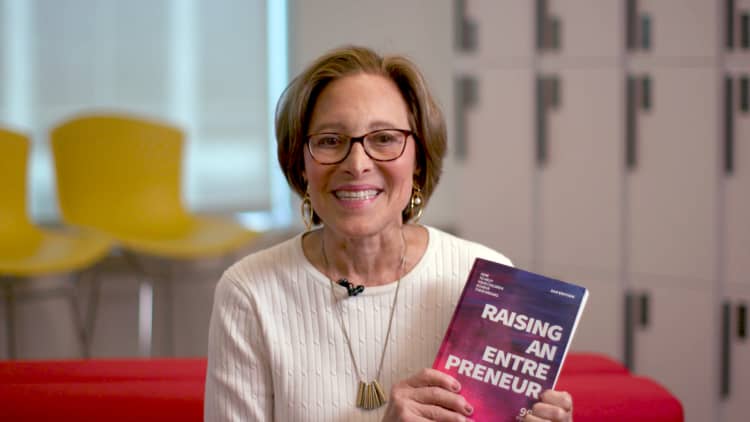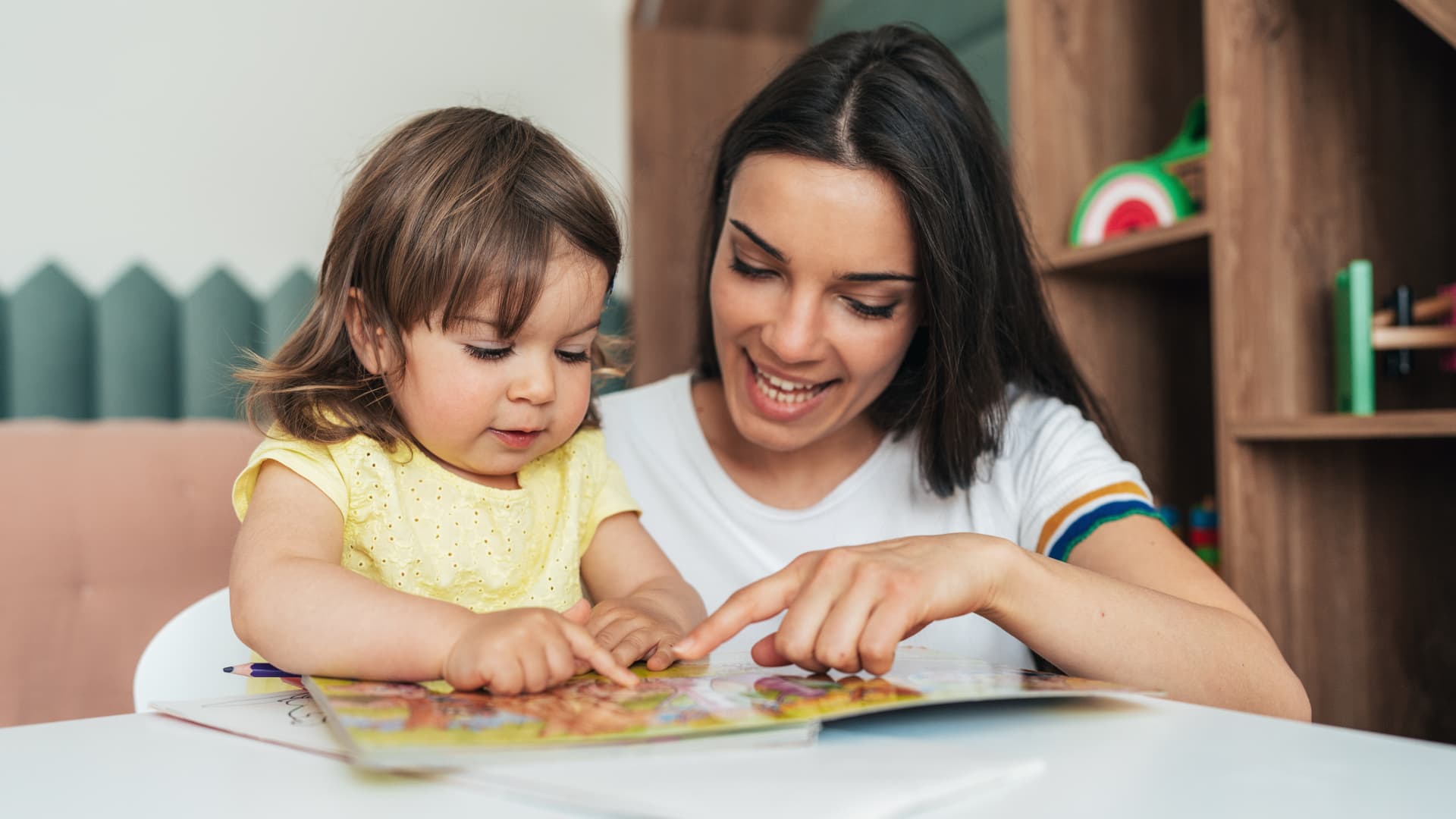When we think of raising a reader, we often picture a child snuggled in bed, bathed in the soft glow of a nightlight, listening to a parent read a story aloud.
That scene is magical. But after more than 10 years of studying how kids become readers and interviewing literacy and child development experts, I’ve learned that powerful raise-a-reader moves aren’t limited to bedtime.
Instead, you can make them happen any time of day, in forgettable little moments woven throughout family life — mostly without a book in hand.
Seizing everyday literacy opportunities matters, because strong reading in elementary school is a powerful predictor of long-term success. Kids who read well early are more likely to stay in school longer, land better jobs, and earn more money.
Here are five things parents who raise successful readers do differently early on:
1. They treat baby babble as conversation
Before their babies can talk, these parents talk back.
When their little one coos or babbles, they respond with real words — making eye contact, smiling, meeting the moment. They hold “conversations,” tuning into the baby’s sounds and gaze, then responding with words, encouragement, and pauses to await the child’s reply.
DON’T MISS: How to successfully change careers and be happier at work
This loving back-and-forth interaction, known as serve and return, builds the foundation for language development and healthy brain architecture, according to Harvard’s Center on the Developing Child.
And it boosts learning alongside connection. Research shows that dynamic, responsive chats in a child’s first two years set the stage for preschool literacy skills like expressive vocabulary and letter-name and -sound knowledge.
2. They ask lots of questions—and wait for answers
These parents ask their babies questions at home, in the car, while running errands:
- “What’s that?”
- “Do you see the dog?”
- “Ready to turn the page?”
Simple? Yes. But powerful. And as kids grow, the questions can get more complex.
Studies show that kids whose parents ask more questions — and leave space for answers — build stronger vocabularies and deeper knowledge by toddlerhood. They understand and use more words, which bodes well for reading comprehension down the road.
The power isn’t just in asking. It’s in giving kids a chance to answer. That’s what gets them thinking and when learning happens.
3. They talk about letter sounds—not just names or shapes
Savvy parents make a point to talk about letters. They spot them in the wild — on street signs, in recipes, on t-shirts — and invite kids to notice them, too. They narrate as they write lists and notes in front of their kids, pointing out how they form the letters. They keep letter blocks and magnets around for everyday play.
Here’s the real difference-maker: They talk with kids about the sounds letters make, not just their shapes and names. If they spot an egg carton in the grocery store or at home, they might trace an E with a fingertip and say, “This is the letter E. One long line down, three short lines across. E says ‘eh’ like in egg.”
One study found that parents reported using an average of 14 different types of materials to expose their children to letters. But observational research shows that even the most well-meaning parents aren’t linking letters to sounds as often as they think in everyday conversation.
Learning how to sound out words is required for reading. Parents who do talk about letter sounds help their kids grasp that letters are just speech captured on the page.
4. They play with words
Think, “Peter Piper picked a peck of pickled peppers,” or, “She sells seashells by the seashore.”
Rhymes, songs, tongue twisters, and silly word play aren’t just fun — they help kids hear and play with sounds inside words. And that’s a must-have for reading. Before kids can match sounds to letters, they have to hear those sounds clearly.
This kind of listening doesn’t happen by accident. It grows when kids get lots of easy, everyday chances to notice, compare, segment, blend, and swap sounds.
5. They seize readable moments all day long
Research shows a clear link between the quantity of parents’ early book reading with children and kids’ later vocabulary and comprehension skills.
But parents of the most avid and successful readers don’t save reading for bedtime. They share books and other text during mealtimes, bath times, wait times — any time.
This opens up more hours and opportunities to nurture language and literacy skills wherever you may be. Street signs, menus, and product labels can be worthy material.
And reading earlier in the day, when kids are more energetic, often sparks more conversation, questions, and learning.
The more often kids hear, see, and talk about words, the more ready they’ll be to read them.
Maya Payne Smart is an early literacy advocate, a parent educator committed to closing the reading achievement gap, and the author “Reading for Our Lives: The Urgency of Early Literacy and the Action Plan to Help Your Child” (Avery/Penguin Random House). She serves as affiliated faculty at Marquette University and holds degrees from Harvard and Northwestern. Find her at MayaSmart.com and follow her on Instagram.
Want a new career that’s higher-paying, more flexible or fulfilling? Take CNBC’s new online course How to Change Careers and Be Happier at Work. Expert instructors will teach you strategies to network successfully, revamp your resume and confidently transition into your dream career. Start today and use coupon code EARLYBIRD for an introductory discount of 30% off $67 (+taxes and fees) through May 13, 2025.






